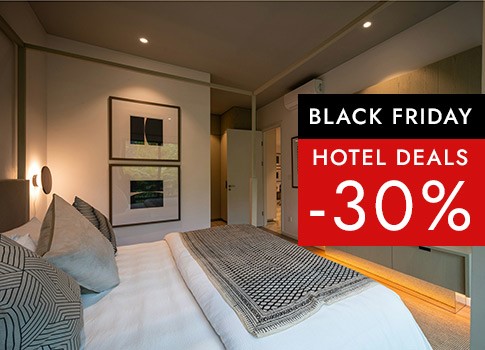Packages and deals are everywhere in hospitality. They’ve become so normal that we rarely stop to ask if they deserve to be. Sometimes it feels like the industry is chasing revenue at the expense of profit, mistaking busyness for business.
They are like rocket fuel: they burn hot and fast. A flash sale fills empty rooms. A percentage off gets you noticed in a crowded market. Guests who save on rooms may even spend more in restaurants, spas, or on extras. And yes, sometimes, that’s exactly what you need.
But here’s the uncomfortable truth: the very tactic that feels like a lifeline can end up being a slow poison. Further still, repeated use often loses power as guests grow accustomed, and the impact weakens over time.

The Questions Every Hotelier Should Ask
Before you launch your next offer, it’s worth pausing to reflect. A discount can look like a quick win, but what’s the real cost? Could it be that…
- you’re discounting rooms guests would have paid full price for?
- you’re teaching guests to only book on deals?
- you’re weakening your brand by focusing on price?
- you’re drifting into a price war you can’t win?
- you’re trading long-term health for short-term gains?
These aren’t questions for luxury hotels alone. They apply to every property, from budget to boutique, from three-star inns to five-star resorts. Price signals value at every level, and when handled badly, it can undermine any brand.
The Algorithms Are Watching
And don’t forget, it’s not just humans you’re signalling to. AI learns from your behaviour too. Keep discounting, and AI will quietly reclassify your hotel. Yesterday’s luxury retreat becomes tomorrow’s midmarket commodity.
You didn’t just lower a price. You lowered your category.
How to Escape the Discount Spiral
There is another way forward:
- Add value, don’t subtract price. A late checkout, a cocktail workshop, a curated city guide. Things that feel like indulgence without cutting into rate integrity.
- Offer smart choices. For example the “Goldilocks effect”: create three clear packages, with the “just right” middle one guiding most guests toward your preferred rate. Too basic feels stingy, too premium feels extravagant, but the middle feels irresistible.
- Sell time and memory, not money. Guests remember moments, not what they saved.
- Phase out promotions. And if you are already hooked, wean your market off the habit rather than shocking them with sudden cold turkey.
This isn’t about charging more for the sake of it. It’s about charging what your property is worth and ensuring every guest feels that worth in the experience.

Black Friday: The Ultimate Trap?
As I write this article, a date in the diary is looming. A date that still tempts many hotels: Black Friday.
Black Friday gives retailers a sugar rush: they shift stock, bank cash, and pull in crowds. But the potential hangover is real: thin margins, customers trained to never pay full price, and brands stuck in a race to the bottom.
For hotels, the danger runs deeper. You can’t clear unsold rooms like old stock - once the night has passed, it’s gone. A Black Friday discount might fill beds, but it risks displacing higher-paying guests, anchoring your brand to cheap deals, and conditioning customers to wait for the next sale. Short-term gain, long-term erosion
Black Friday can boost gifts and extras, but for rooms it’s a risk. Used without discipline, it’s not just a discount. It’s a devaluation.
The Bottom Line
Discounts are powerful, but they’re not a strategy. They may fill a room for a night, but they rarely build a brand for a lifetime. Guests don’t tell stories about saving £20. They tell stories about how you made them feel. That’s where the real value lies.
Headline imagery created using Gemini and Midjourney







